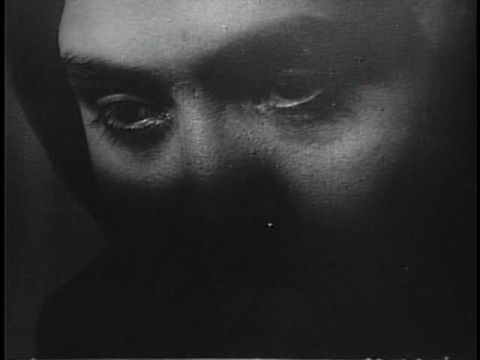I think it is a fair statement that the modern horror genre was born out of a marriage between the German Expressionism's easthetics and Hollywood’s big-budget, mainstream storytelling tradition. For good or bad, that combination has dominated horror film world-wide ever since.
But there were certainly other directions it could have taken. And did, in some cases. Carl Theodor Dreyer showed us a glimpse of one possible influence of avant-garde thinking in the horror genre in his first sound film, Vampyr.
In spite of the German language of this particular print, the film was produced in France. Like most French films from around this period, it has problems with the soundtrack, which is somewhat inexpertly dubbed afterwards. Look, for example, at Zéro de conduite (1933), which is even worse, and then compare with the Hollywood film White Zombie (1932). Even though the American film suffers from inferior recording equipment (compared with what would be the norm just a few years later), it sports sound recorded on location, perfectly synchronized with the images.
But that “perfect” sound comes at a prize. Another interesting comparison is how much more elegantly Dreyer was able to work with the light silent-era cameras that I assume he was still using. White Zombie, in comparison, is much more static and conventional in its imagery, and that is partly because they had to use heavier, sound-proofed cameras.
Dreyer sometimes inserts surrealistic elements, and even though the basic plot is fairly simple, he makes jumps that stretches the story’s credibility. The plot can therefore at times be difficult to follow, but that is a problem only if you expect a traditional story structure. This kind of avant-garde film is not one where comprehending is always the most important thing. Here, everything is designed to make you feel, rather than analyze. So let go your conscious mind, and allow your subconscious to guide the experience.
This film is best enjoyed for two reasons, both contributing to the tense atmosphere that is felt throughout. The first reason is Dreyer’s excellent use of camera, lighting and angles. The second is Wolfgang Zeller’s amazing score, in itself reason enough to watch the film.
Vampyr
Download link
Year: 1932
Language: German (English subtitles)
Running time: 1 h 13 min
Director: Carl Theodor Dreyer
Stars: Nicolas de Gunzburg (Julian West)
Image quality: Acceptable (poor in some scenes)
Resolution: Medium (574×434; not counting black border)
Sound quality: Acceptable
Best file format: MPEG4 (1,018 M)







